




 |
   |
 |
|
Iraklis Irish Brigade Iron Butterfly Iron Claw |
Iron Griffin Ironweed Chris Isaak Isildurs Bane |
Islands Isley Brothers Dan Israel It's Me Margaret |
Akira Ito Mayumi Itsuwa Iviron Dafydd Iwan |
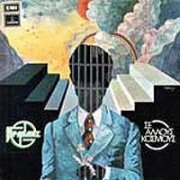 |
Se Allous Kosmous (1976, 62.09) ***½/TT |
||
| Eisagogi Mia Fylaki To Dentro Solo Piano Thelo Na Taxidevo Magiki Apoklisi Dyo Parallages Na Ha Ftera |
Taxidi Kalesma To Panigyri Se Allous Kosmous Anazitisi Tha Rthei Vrohi Poios Xerei Xekinisame |
Ehoume Fotia Gia Polemo Finale Chorodiako |
|
Current availability:
Mellotron used:
Iraklis Triantafylidis' Iraklis (sometimes referred to as Hiraklis, due to an anomaly in transliteration) were a Greek progressive outfit, seemingly an offshoot of the more commercial Iraklis & Lernaia Hydra, whose 1976 double concept effort, Se Allous Kosmous (In Other Worlds), was reissued as a single disc in the States in 1981, making it difficult, until recently, to source the original recording. The full album is a wildly ambitious, folk-influenced effort, whose chief thrust (the concept) is entirely lost on non-Greek speakers, which shouldn't preclude most of us from enjoying the music for what is, particularly when (as on To Panigyri or Xekinisame) it heads off into skirling fiddle territory. The album's lack of overall focus can be irritating, though, as in the shift from the full-on prog of Anazitisi to the rock'n'roll of the first half of Tha Rthei Vrohi.
Someone (Nikos Sakelis?) plays Mellotron on several tracks, with strings on To Dentro, Kalesma and in the background on the title track, strings and choir on Anazitisi and more strings on Tha Rthei Vrohi, Poios Xerei and finally, Finale Chorodiako, although the use is rarely upfront, to be honest. So; do you buy this record? Probably not for the Mellotron, but to hear a unique specimen of mid-'70s Greek folk/psych/prog, that's a yes.
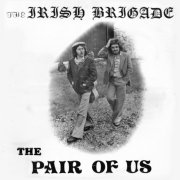 |
The Pair of Us (1977, 32.11) ***/TT½ |
|
| Jamboree Carrigfergus Kilfenora James Connelly Greenflag Old Brigade Rivers Cuanla |
Mermaid Glenside |
|
Current availability:
Mellotron used:
The Irish Brigade (unfortunate name, carrying a whiff of violent republicanism about it) were the ex-pat Limerick duo of Gerry Goodwin and Mike Wallace, who relocated to the States in the mid-'70s, finding a ready audience for their entirely authentic repertoire amongst the descendants of the nineteenth-century diaspora. 1977's The Pair of Us, recorded at a studio in Illinois, is pretty much what you'd expect: an all-acoustic combination of traditional Irish ballads (Carrigfergus, Cuanla) and rebel songs (James Connelly, Old Brigade), indistinguishable from anything you'd hear in a Shannon pub of a Friday night. Do they do it well? As far as I can hear, although I could've done without the IRA references, being old enough to remember their UK bombing campaigns. I'm not sure what's going on with the titles, either; the ones above, from the rear sleeve, appear to be edited versions, so Jamboree is actually Whip Jamboree, Greenflag is Wrap The Green Flag Round Me etc.
Stephen G. Wilcox plays Mellotron, with what sounds like high-end cellos and definite strings on Carrigfergus, lush strings on James Connelly and Rivers and a string part on closer Glenside that actually rides over the guitar and vocals. The band (now based in St Paul, Minnesota, the late Goodwin replaced by Joe Smith) are still going strong, which explains this album's availability on CD, although their website gives no more info. Do you need to hear it? Only if you go for Irish folk without the fiddles and uilleann pipes; perfectly competent, doubtless amazing in a packed Irish pub, but a bit cold on vinyl. Nice Mellotron use, though.
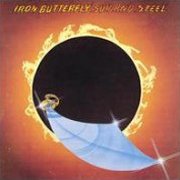 |
Sun & Steel (1975, 36.26) ***/TT½Sun and SteelLightnin' Beyond the Milky Way Free Scion Get it Out I'm Right, I'm Wrong Watch the World Going By Scorching Beauty |
Current availability:
Mellotron used:
Iron Butterfly reformed in the mid-'70s, having initially split a few years after 1968's groundbreaking In-a-Gadda-da-Vida album and single. By 1975's Sun & Steel, however, they were on an unstoppable downward trajectory, which was a shame, as instead of the washed-up career-end effort you might expect, it's actually a passable mid-'70s hard rock record. Stronger tracks included the title track, Get It Out and I'm Right, I'm Wrong, although limp balladry such as Beyond The Milky Way tended to let the side down somewhat.
Keys man Bill DeMartines (replacing Howard Reitzes, who played on the previous year's Scorching Beauty) got some Mellotron on the album, with a brief burst of flutes on the opening title track, while I'm Right, I'm Wrong has a scorching strings intro, with more flutes later in the track, oddly alongside real strings. More strings and choir on Watch The World Going By, with a final flurry of strings on what should've been the title track to their previous release, Scorching Beauty, although the strings on Beyond The Milky Way are real.
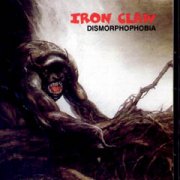 |
Dismorphophobia (1996, recorded 1971-73, 55.36) ***½/T½ |
|
| Claustrophobia Let it Grow Gonna Be Free Lightning Pavement Artist Loving You All I Really Need Take Me Back |
Knock 'em Dead Winter Strait-Jacket Rock Band Blues Real Mean Rocker Spider's Web |
|
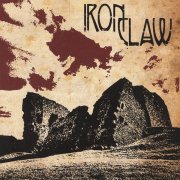 |
Iron Claw (2009, recorded 1970-74, 74.46) ****/T½ |
|
| Clawstrophobia Mist Eye Sabotage Crossrocker Skullcrusher Let it Grow Rock Band Blues Pavement Artist |
Strait Jacket Gonna Be Free Loving You Lightning All I Really Need Knock 'em Dead Winter Devils |
|
Current availability:
Mellotrons used:
Iron Claw were a very early-'70s Scottish hard rock band, with a heavy Black Sabbath influence, amongst others, although they also had an unfortunate penchant for 'good-time boogie', or whatever you care to call it. Although they never released anything at the time, they laid down a whole load of tracks; now, this has always confused me. How is it that obscure, penniless bands can record so much material that an hour-long CD can be compiled thirty years hence, when I never managed more than a three-song demo with any of my old bands? How did they afford it in those 'studio or nothing' days?
They did, however and those excellent Audio Archives folks have given us fifty-five minutes of Iron Claw at various levels of clarity, some tracks featuring fairly untenable levels of hiss, although I suppose you take what you can get, really. Incidentally, I've no idea how much say the band had in the title, but Dismorphophobia means 'a disorder where the sufferer is unhappy with aspects of their own body', or somesuch; sounds like a wider-reaching version of anorexia to me, although I've zero idea what relevance it had to their music. Anyway, for the record, track 1 is from 1970, 2-9 from '71 (an aborted album project?), 11-14 from '72 and 10 from '73, although it has to be said that the first half of the album fares better than the second, disposable efforts such as Rock Band Blues and Real Mean Rocker (ugh!) serving only to dilute the power of Claustrophobia or the Stray-like Let It Grow, although I accept that if you're going to clean up a bunch of old tapes, you should be pretty completist about it.
The band veered between four- and five-piece lineups, studio keys man Billy Lyall (later of Pilot, fact fans) adding sax and percussion to some of the keyboardless numbers. On the Mellotron front, he provides a strings intro on Pavement Artist, but goes for it properly on All I Really Need, with a strings part throughout and a cello and strings intro on Take Me Back. Three tracks, all dating from the same period looks like a studio machine to me, although given his cello use, it must've been a new M400, which only came out the previous year.
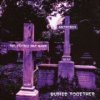 |
n.b. A very odd piece of information has cropped up regarding Iron Claw... Another early-'70s bunch whose work has appeared on CD in recent years, Antrobus (probably named in honour of the first man to restrict access to Stonehenge), are no more or less than the same band! Their 1992 CD, Buried Together (right), includes the four surviving tracks by the Flying Hat Band, who included a pre-Judas Priest Glenn Tipton amongst their ranks. Irritatingly, although fewer Iron Claw/Antrobus tracks are included on this version, they're better quality than on Dismorphophobia. Your choice, I suppose.
Shall we add to the confusion? Well, shall we? 2009 brought another Iron Claw retrospective, this time from the Vintage label, mostly crossing over with Dismorphophobia, albeit in better quality sound, losing three tracks (bye bye, Real Mean Rocker) and adding five, notably Skullcrusher and closer Devils. Unfortunately, one of the three 'lost in action' tracks is Take Me Back, although Devils opens with monster Mellotron flute and string parts. If you're into Iron Claw's thang, particularly when it comes to the Mellotron, you really need both albums, although you can cheerfully skip Buried Together, unless, of course, you have to have that Flying Hat Band session.
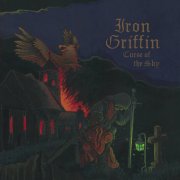 |
Curse of the Sky (2019, 30.48) ***/TPreludeReign of Thunder Forgotten Steel Lost Legion Curse of the Sky Dawn of Struggle To the Path of Glory |
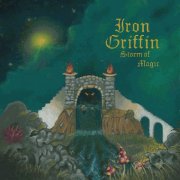 |
Storm of Magic (2022, 35.15) ***½/TTLady of Space and TimeUnholy Epistle Goddess of the Moor The Witch and the King Storm of Magic |
Current availability:
Mellotrons used:
Iron Griffin are Mausoleum Gate drummer's Oskari "Oscar Razanez" Räsänen's side-project, in collaboration with vocalist Maija Tiljander. They may well describe themselves as 'heavy metal', but the sound on their debut, 2019's Curse of the Sky, is more NWoBHM-flavoured '70s hard rock (not entirely dissimilar to UK outfit Saracen), with little contemporary influence. Räsänen plays almost everything and, possibly as a result, it's a peculiarly gutless release, his drumwork (ironically) too laid-back for its own good, while his material struggles to engage the listener, probably at its best on Lost Legion and closing mini-epic To The Path Of Glory. I remain unconvinced by the frequent 'viking' massed male vocals, too, if I'm going to be honest. Räsänen plays Mausoleum Gate's M400 on To The Path Of Glory, with flute and choir parts enhancing the song nicely. If you like the parent band, you may go for this, but Räsänen needs to up his game on the playing and production front next time round.
Thankfully, that's exactly what the duo have done on '22's Storm of Magic. The same elements are present, but assembled into a more coherent end result, the obvious highlight being the epic, fifteen-minute title track. It's still as murky as fuck, but that's clearly the effect they're going for, rather than simply poor production. I'm not sure their range of influences has become any wider, but there's something to be said for consistency. Two Mellotron tracks, with shrieky strings and male choir on Unholy Epistle and the title track, fairly heavily on the latter.
See: Mausoleum Gate
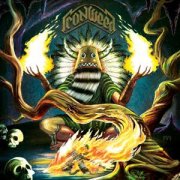 |
Indian Ladder (2008, 55.49) **½/½ |
|
| This Faithless Will Lost and Forgotten Disconnect A World Away Thorn Rid the Earth A Penny for Your Prayers Lifeless Coil |
Vertigo Death of Me Moth |
|
Current availability:
Mellotron used:
Ironweed (named for the book? More likely the film) are so clichéd they almost transcend cliché. But only almost. Their debut album, 2008's Indian Ladder, is so typically downtuned metal (seemingly every song's in C) that you pretty much know what they're going to do before they do themselves. The problem with bands who habitually downtune, I've found, is that unless they only use it for effect and have the intelligence not to let it take over (the mighty King's X spring to mind), they'll end up writing everything in whatever key they've downtuned to, making every track sound exactly the same as every other. Ironweed are no exception. As a result, the album sounds just like every other band doing the same kind of thing, somewhere between Metallica and a grotesque, speeded-up perversion of Black Sabbath, although I'm sure they'd reel out reams of influences, none of whom would mean a thing to me.
The superbly-named Benny Grotto (his real name, he tells me) plays the band's own Mellotron, with murky flutes on Thorn, although other possible sightings seem more likely to be guitar. While this is a less painful listen than many cruddy indie, CCM and other vile genre albums I've ploughed through recently, that doesn't make it particularly good, I'm afraid.
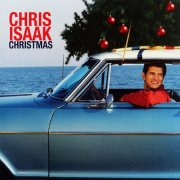 |
Christmas (2004, 40.01) **/T½ |
|
| Rudolph the Red-Nosed Reindeer Have Yourself a Merry Little Christmas Santa Claus is Coming to Town Washington Square Blue Christmas The Christmas Song Hey Santa! Let it Snow |
Christmas on TV Pretty Paper White Christmas Mele Kalikimaka Brightest Star Last Month of the Year Gotta Be Good Auld Lang Syne |
|
Current availability:
Chamberlin used:
Chris Isaak is one of those anomalies the music industry throws up occasionally: a rockabilly-informed singer/guitarist who was pushing thirty in the mid-'80s when he signed his first record contract, which seems to make no commercial sense at all. However, Isaak was fortunate enough to have David Lynch as a superfan, using his music in several films, inspiring other directors (Tony Scott, Kubrick) to do the same. 2004's Christmas is, of course, a classic example of the dreadful 'seasonal album'; I believe much of Isaak's work is at least worth a listen, but I can only urge you to avoid this, with prejudice. Is it a bad Christmas album? Not as such, no, but, aside from possibly Spector and The Beach Boys, I'm not sure anyone's actually made a good one. Bah humbug. Anyway, anything here even remotely worth hearing? Not really, but his own composition Washington Square isn't too bad, while I enjoyed the mariachi moves on Hey Santa!, but the pickings are exceedingly slim.
Patrick Warren plays his trusty Chamberlin, with orchestrally-arranged string parts on Washington Square, The Christmas Song, Pretty Paper and Brightest Star, plus flutes on Hawaiian festive number Mele Kalikimaka. Do they improve matters? Not even remotely. I feel a little churlish for giving this such a pasting, but, even though I'm reviewing this in December, this kind of record is aimed at a very specific, very mainstream market. I am not that market.
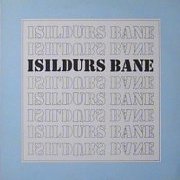 |
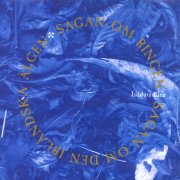 |
Isildurs Bane [a.k.a. Sagan om den Irländska Älgen] (1982, 37.17) ***½/½Sagan om den Irländska ÄlgenOvertyr Saga Eller Verklighet Ove P. Sex Minuter En Vilja Att Leva Evighetens Visdom Marlboro Blues Fredrik |
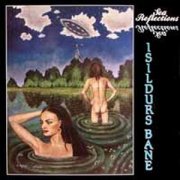 |
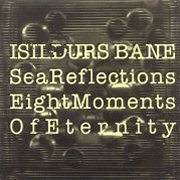 |
Sea Reflections (1985, 39.25) ***/½BlizzardBatseba Sea Reflections Part I Sea Reflections Part II Poseidon Bilbo Top Secret - UFO The Story of Chester & Sylvester |
Current availability:
Mellotrons used:
Isildurs Bane are a strange kind of band, spending their first decade constantly changing styles, no doubt confusing the small number of people who knew who they were. Of course, CDs and the Internet have made their music, like so many others', widely available, but it's difficult to know what to recommend, as they've already taken several different paths in their career. The one thing that seems to tie all their different incarnations together is their use of mallet instruments. I saw them in late '98 and they had no fewer than three different sets of mallets up there (presumably vibraphone, xylophone and marimba), helping to make them one of the most impressive bands of the festival.
Isildurs Bane (later available, retitled Sagan om den Irländska Älgen with Sagan om Ringen on one CD) is a neo-proggish effort, ending up being better than that sounds. Some of the material's quite pastoral, some a little jazzy (not least due to the vibes), ending up being really quite listenable, if not exactly wildly exciting. A little Mellotron choir, probably played by Mats Johansson, at the end of Sagen... part 3, Ove P., but not nearly enough to make it worth buying on those grounds alone. As far as I can work out, despite recording four of Sagan om Ringen's tracks right back in '81, the next album the band actually released was '85's Sea Reflections and it's immediately obvious they'd moved in a jazzier direction, with considerable use of sax and those mallets to the fore again. A couple of Mellotron tracks this time round (I've no idea whether or not the band actually owned a Mellotron); Batseba and Sea Reflections Part II have some faint choirs, but there's only a few seconds in each song.
Isildurs Bane settled down after their mid-'80s jazz period and are still going now. If you like the sound of their jazz stuff, Sea Reflections and the album with which it's doubled-up on CD, Eight Moments of Eternity, might be your thing, but the rest of you might be better off going for some of their later stuff (Cheval: Volonté de Rocher is particularly good), or maybe the first CD. I wouldn't bother for their minimal Mellotron use, though.
 |
Vapours (2009, 42.23) **½/½ |
|
| Switched on No You Don't Vapours Devout Disarming the Car Bomb Tender Torture Shining On Foreigner |
Heartbeat The Drums Eol Everything is Under Control |
|
Current availability:
Mellotron used:
Islands formed in Montréal in 2005, working hard and releasing three albums in the space of four years. 2009's Vapours is the latest of these, a pretty ordinary indie/pop effort (actually, all indie is, at heart, pop, isn't it?), albeit with an electronica influence missing from its predecessors, enlivening a few tracks slightly, though unable to lift its overall mood of ennui and torpor.
Nick "Diamonds" Thorburn adds Mellotron flutes to the unpleasantly Autotune-ruined Heartbeat, nowhere near enough to improve the album overall, I'm afraid. So; drippy indie with one (real?) Mellotron track. Maybe not, eh?
See: Samples etc.
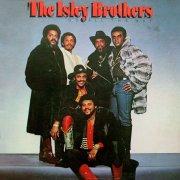 |
Go All the Way (1980, 34.56) ***/TGo All the Way (Parts 1 & 2)Say You Will (Parts 1 & 2) Pass it on (Parts 1 & 2) Here We Go Again (Parts 1 & 2) Don't Say Goodnight (it's Time for Love) (Parts 1 & 2) The Belly Dancer (Parts 1 & 2) |
Current availability:
Mellotron used:
The Isleys were well over twenty years into their career by the time they released 1980's Go All the Way; like almost every other soul/r'n'b record of the time, it largely sits in the Disco camp (and I mean camp), every one of its six tracks having two sections, a vocal part (editable into single form) and an instrumental outro (presumably for b-sides). The end result is completely flawless, perfectly-executed dance music, useless to anyone looking for genuine musical content, although I'm sure aficionados would argue that one at length.
Chris Jasper (an Isley brother-in-law) plays keys, presumably including the album's Mellotron work, with pseudo-orchestral strings right through the album's ballad, Don't Say Goodnight (It's Time for Love), although it's hardly worth getting hot'n'bothered about. So; a decent album of its type with one reasonable Mellotron track, assuming that's what you're after.
 |
Love Ain't a Cliché [Dan Israel & the Cultivators] (2003, 47.49) ***½/T |
|
| Some Time Don't Feel Like Laughing Friend in This Town Jump Through the Rings Killing Time Hey Kid Feet in the Water Overload |
Dark Corner Sandbags Never-Ending Circles The Knot Wasn't Lost on Me |
|
 |
Live on (2013, 36.53) ***/½ |
|
| Rollin' Away Ain't Gonna Let the World Live on Won't Have to Wait Until You See a Sign Release Falling Short Lost Somehow |
The Heart of Me You Just Kept Playing Guitar Mile After Mile |
|
 |
Dan (2015, 35.00) ***/½ |
|
| Winter is Coming Be With Me Can't Believe it Two Bright Stars You Don't Love Me Anymore Moving Day Lonely Too Try and Let You Know |
Winning at Solitaire Now You're on Your Own |
|
 |
Social Media Anxiety Disorder (2019, 41.13) ***½/½ |
|
| Be My Girl 125 Just Can't Take it Still I'm Lost Might as Well Be Me Another Day Just Can't Take it Revisited Tired |
Alright Here for Today Out of My Hands Out of My Hands (reprise) |
|
Current availability:
Chamberlin/Mellotrons used:
Minneapolitan Dan Israel is the kind of accomplished modern singer-songwriter whose work straddles Americana, powerpop and indie, for want of a better description. 2003's Love Ain't a Cliché (credited to Dan Israel & the Cultivators) is a fine set of material in the above style(s), possibly at its best on Americana-esque opener Some Time, Hey Kid, Feet In The Water and The Knot, but nothing here lets the side down. Peter J. Sands (Honeydogs, Bellwether, others) plays Chamberlin, with overdubbed male and female solo voices on Sandbags and regular strings on closer Wasn't Lost on Me. After several interim releases, 2013's Live on sees Israel moving sharply towards the 'Americana' part of his soul, the end result being a little less eclectic and, sadly, less interesting as a result. Better tracks include Won't Have To Wait and the more upbeat Lost Somehow, but something seems to have been lost. James Tyler O'Neill on Mellotron, with distant strings (overlaid with Jillian Rae's violin?) on Falling Short, although the faint strings on closer Mile After Mile sound like generic samples.
2015's Dan, complete with amusingly ironic sleeve art, carries on in a similar vein to its immediate predecessor, at its best on Be With Me, the rockier Can't Believe It and Moving Day. Although Sands plays on the record, it's O'Neill on Mellotron again, if only just, with a brief flute part on Winning At Solitaire. 2019's Social Media Anxiety Disorder, with its even more amusingly ironic sleeve art, is a more diverse and, frankly, better album, highlights including upbeat opener Be My Girl, the countryish Might As Well Be Me, the breezy Another Day, Alright and the propulsive Here For Today, while Just Can't Take It Revisited features amusing spoken-word interludes, presumably from Israel himself. John Fields on Mellotron, if barely, with faint strings here and there on album closers Out Of My Hands and its reprise, although the Mellotronish flute on 125 clearly isn't.
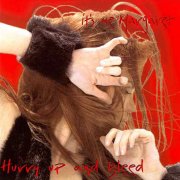 |
Hurry Up & Bleed (1999, 46.24) **½/½ |
|
| Days Like These Wow What a Life Doesn't Mean I'm Nothing So Sorry Fallen Desperate Tina Creepy Creature Lovely Lily |
Broken Kids Like Us Candlelight Don't Give Up |
|
Current availability:
Mellotron used:
It's Me Margaret, clearly named for Judy Blume's 1970 YA classic Are You There God? It's Me, Margaret, are a kind of indie/psych outfit, whose Hurry Up & Bleed (an obvious reference to the novel), while it has its moments, ultimately lacks focus and any particularly memorable tunes. Any better moments? Probably raucous opener Days Like These and Kids Like Us.
Josh Achziger plays a slightly watery, yet mercifully real-sounding Mellotron string line on Tina, dipping in and out of the mix. Incidentally, there seem to be two slightly different versions of the album doing the rounds, the other one including three brief vignettes, all entitled Dead Bird Lady, reportedly answerphone messages left by a crazy neighbour, adding a whole 1:25 to the album's length.
 |
Inner Light of Life [a.k.a. Yasuragi o Kimini] (1978, 42.35) ***½/TMizunoneRei no Mon Yorokobi no Hikari Ai no Tsubasa Hikari Kara no Inochi Daidō Mirai e no Ho Sanjō no Yasuragi |
Current availability:
Mellotron used:
Ex-Far East Family Bander Akira Ito's first solo album, 1978's Inner Light of Life (a.k.a. Yasuragi o Kimini) hits the new age spot perfectly, making you wonder why he never became a household name like his ex-Far East colleague, co-keyboardist Kitaro. Possibly at its best on sea sounds/sequencer/piano opener Mizunone, Yorokobi No Hikari, which has more of a culturally Japanese feel than anything else here and Daido, there's little here for Kitaro fans to turn their noses up at.
Ito plays Mellotron, albeit not that much, with background choirs on Rei No Mon and slightly more upfront ones on Hikari Kara No Inochi and Mirai E No Ho. This album's inoffensiveness makes it vastly more listenable than an awful lot of music I could name. Pleasant, if slightly unengaging.
 |
Fuyuzareta Machi [a.k.a. Live Wintry Streets] (1973, 47.41) **½/½ |
|
| Searching for You (part 2) Both Sides Now Medgar Evers Lullaby You've Got a Friend Girl It's Too Late Killing Me Softly With His Song Wintry Streets |
Aiko Tobacco |
|
Current availability:
Mellotron used:
Going by this supper-club live release, Fuyuzareta Machi (also apparently known as Live Wintry Streets, although I don't know whether that's merely a translation), Mayumi Itsuwa was a very mainstream pop singer in the '70s, most of the album consisting of ballads of various hues, along with the occasional more upbeat piece, notably It's Too Late and closer Tobacco.
Jun Fukamachi plays minimal Mellotron, with a sparse string part on Killing Me Softly With His Song, in 'orchestral replacement' mode. No, this is not worth hearing for either its content or its Mellotron use.
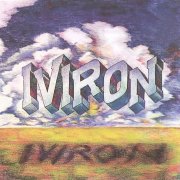 |
Iviron (1981, 35.56) ***½/TTAfter the PushBernie the Faust Bhairava Wings of Perception Part II Part III Irish "Madley" Sister Magic Tales of Iviron Ode |
Current availability:
Mellotron used:
Do you want obscure? Well, do ya, punk? Iviron are about as unknown as it gets, it seems. I'm only aware of their existence due to the kindness of one of my correspondents (thank you, Wolfgang!) - in fact, I can find precisely two 'Net mentions of it, one of which is an expired auction on Belgian eBay... I think you get the picture [n.b. It's now on Discogs]. So, what are they like? Well, Iviron is definitely 'progressive' - more so than a great many later 'prog' albums, as the band experiment extensively, no one track on the album really sounding like any other, which is something that just doesn't seem to happen any more. After The Push is a classical guitar/flute duet that turns into a Spanish-sounding piece with tabla backing and the occasional soprano voice, Bernie The Faust is a fiddly unison guitar/bass and vocal thing that picks up the pace halfway through, with operatic interjections, Bhairava is as Indian-influenced as you'd expect, Wings Of Perception is a slower prog thing on Part II (whither Part I?) that turns into jazz on Part III... Get the idea? And I haven't even mentioned the bonkers Irish "Madley" or Sister Magic's sad tale of a transsexual pickup...
Ingo Schleicher-Atanasov plays various guitars, sings and adds Mellotron to a handful of tracks, the only keyboard on the album aside from Robert Säbel's piano, fact fans. It's not over-used, but works well where it is heard, with distant strings on Bernie The Faust, a quiet church organ part on Wings Of Perception, Part II and string chords running right through Ode. To be honest, you're probably not going to find this very easily, unless someone does the decent thing and reissues it at some point, but if you want to hear a rare and unusual prog album with enormously diverse influences, you've come to the right place. Of course, Austria in 1981 probably wasn't a hotbed of progressive activity, so this obscure album is even more to be treasured. I'm not saying it's a classic, but it's very much worth hearing for the progressive aficionado, with some nice Mellotron work to boot.
See: Exciting Café
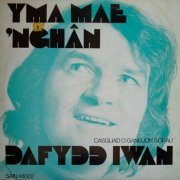 |
Yma Mae 'Nghân (1973, 45.08) ***/T |
|
| Wrth Feddwl am Fy Nghymru Daw, Fe Ddaw yr Awr Yn Ôl Imi Mae Geneth Fach Yng Nghymru Croeso Chwedeg-Nain Beth Yw'r Haf i Mi? Cân Y Medd Ji Geffyl Bach Hyn Sydd Yn Ofid Im |
Cân y Glowr Cân yr Ysgol Gad Fi'n Llonydd Rwy'n Gweld y Dydd |
|
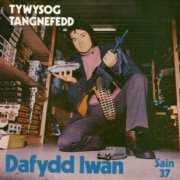 |
Tywysog Tangnefedd (1973, 14.55) ***/TTywysog TangnefeddMae Hiraeth yn Fy Nghalon Y Steddfod Beiling Mae'r Llencyn yn y Jêl |
Current availability:
Mellotrons used:
As you cross the border from England into Wales, you'll see a sign saying Croeso i Gymru: Welcome to Wales. It feels mildly sarcastic, but, after England's treatment of its vassal states, who can blame the Welsh? Over the centuries, England's treatment of Scotland, Wales and Ireland has crossed the line from 'abusive' to 'murderous' too many times to count; so far, only (most of) Ireland has actually succeeded in breaking away from the imposed union, and then only with considerable bloodshed. Unlike Scottish and Irish Gaelic, Welsh (another form of Gaelic) is spoken by roughly a million people as their first language; only a 'minority' language compared to English. Welsh-language singer-songwriter Dafydd Iwan is part of the reason for that dual-language signage. His career began during the early '60s 'folk revival', releasing his first EP in 1966, swiftly moving into the political arena, even being imprisoned for a brief period in 1970. He eventually became president of Welsh independence party Plaid Cymru after decades of activism.
1973's Yma Mae 'Nghân (Here's My Song, possibly released '72) was his first solo album, which appears to be mostly re-recordings of material originally released on a string of EPs in the late '60s, utilising the cream of the Welsh music scene, not least guitar legend Dave Edmunds and (actually English) drummer Pick Withers (once of Spring), later a Dire Strait. The songs are mostly of the 'singalong folk' variety, mould-breakers including the mournful Beth Yw'r Haf I Mi? and the country/rockabilly cross of Ji Geffyl Bach, complete with Edmund's steel guitar. The only one I can tell you anything about is 1969's banjo-driven Croeso Chwedeg-Nain, with its mock-church organ intro, protesting the investiture of Charles, Prince of Wales, apparently now our king. The arrogance of the British royal family is legendary; did the Welsh people actually ask for a prince? I wish I could understand the lyrics; you can clearly hear the words 'Princess Anne' and 'queen' at various points. Suffice to say, I don't think Iwan's being especially polite.
Anyway, Mellotrons! My informant tells me it's arranger Hefin Elis playing it (and the album's other keyboards?), although I can't find any direct reference myself. It seems we're hearing Rockfield Studios' M400, probably also used on Nia Ben Aur and others. Not that there's much of it to be heard here, just a handful of block string chords at the end of opener Wrth Feddwl Am Fy Nghymru and orchestrally-arranged strings on Hyn Sydd Yn Ofid Im, but it's always good to hear. An EP from the same year, Tywysog Tangnefedd (Prince of Peace), combines more of that singlalong folk with the balladic Mae Hiraeth Yn Fy Nghalon and the hymnal Mae'r Llencyn Yn Y Jêl. A definite Elis Mellotron credit this time, with a major string part on Mae Hiraeth Yn Fy Nghalon.